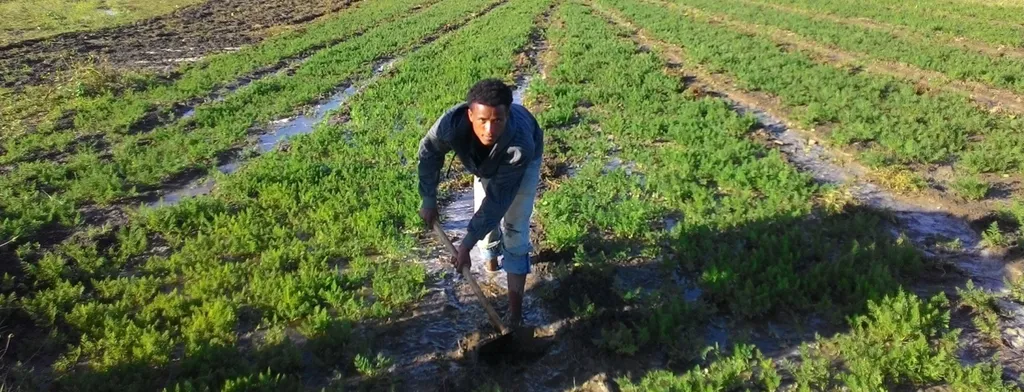In the heart of Ethiopia, where the rhythm of life is dictated by the rains, smallholder farmers are on the frontlines of climate change. A recent study published in the journal *Current Research in Environmental Sustainability* (translated as *Current Research in Environmental Sustainability*) sheds light on how these farmers are adapting to an increasingly unpredictable climate, offering valuable insights for policymakers, agricultural stakeholders, and the broader energy sector.
The research, led by Tewodros Adane Nega from the Department of Rural Development and Agricultural Extension at Bahir Dar University, along with his affiliation at Debark University, delves into the adaptation strategies employed by smallholder farmers across three distinct agroecological zones in northwestern Ethiopia. The study, which surveyed 383 farm households, reveals a nuanced picture of resilience and resourcefulness in the face of climate variability.
“Farmers are not passive victims of climate change,” Nega asserts. “They are actively adapting, employing a range of strategies to protect their livelihoods and ensure food security.”
The study identifies several key adaptation strategies, with crop diversification topping the list at 79.9%. This is followed by the adoption of drought-resistant varieties (62%), early-maturing crops (55.6%), and soil and water conservation practices (49.4%). These strategies are not merely survival tactics; they are commercial imperatives in a region where agriculture is the backbone of the economy.
The research employs a multivariate probit model (MVP) to analyze the determinants of these adaptation strategies. It finds that factors such as age, education, family size, farm size, annual income, access to extension services, agroecological zone, livestock ownership, and market proximity significantly influence farmers’ choices. This underscores the need for tailored, context-specific policies that address the unique challenges and opportunities faced by farmers in different regions.
“One size does not fit all in agriculture,” Nega notes. “Understanding the specific factors that drive farmers’ adaptation decisions is crucial for designing effective policies and interventions.”
The implications of this research extend beyond the agricultural sector. As the world grapples with the impacts of climate change, the energy sector is increasingly looking towards sustainable, climate-resilient practices. The adaptation strategies identified in this study could offer valuable insights for the development of climate-smart energy solutions, such as bioenergy and solar-powered irrigation systems.
Moreover, the study highlights the importance of investing in rural development and agricultural extension services. By empowering farmers with the knowledge, skills, and resources they need to adapt to climate variability, we can enhance the resilience of agricultural systems and contribute to sustainable development goals.
As we look to the future, the findings of this research serve as a reminder that the fight against climate change is not just a global challenge; it is a local one. It is fought in the fields and farms of smallholder farmers, who are not only feeding their communities but also paving the way for a more sustainable and resilient future.
In the words of Nega, “The solutions to climate change lie in the hands of those who are most affected by it. By supporting farmers in their adaptation efforts, we can build a more resilient and sustainable future for all.”

